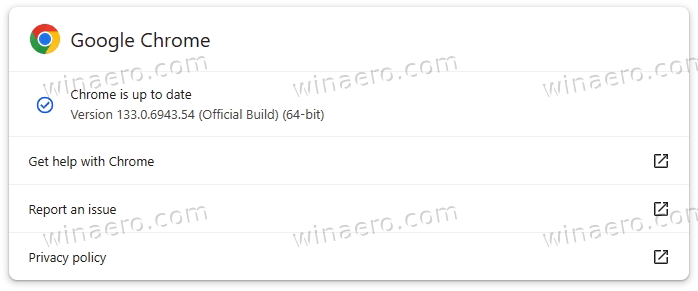On February 4, 2025, Google released Chrome 133 for Windows, Linux, and macOS. This version introduced new features, fixed previously discovered bugs, and addressed twelve vulnerabilities, three of which got a high priority rating. Chrome 132 launched in mid-January, and Chrome 134 is set to arrive in early March.
Advertisеment

What's new in Chrome 133
Energy Saver Mode
One percent of users now benefit from a feature that freezes tabs in energy saver mode. If a tab consumes significant CPU resources and remains hidden for over five minutes, it gets frozen automatically.
Chrome Sync Update
Chrome Sync no longer supports versions older than four years. To store and sync browser data linked to a Google account across systems, users must use at least Chrome 89.
Android JIT Optimizer Setting
The Android version introduces a new setting that allows users to disable JIT optimizers in the V8 JavaScript engine. Disabling JIT can improve the security of potentially dangerous web apps by reducing possible attack vectors. On desktop versions, this setting is available in chrome://settings/security since Chrome 122.
URL Parsing Standardization
Chrome now follows a standard for parsing non-special URL schemes like "git://example.com/path".
WebAssembly Memory64 Support
WebAssembly gained the ability to use 64-bit pointers (Memory64), enabling work with linear memory areas larger than 4 GB.
Developer Tools Enhancements
The web developer tools have received updates, including saving your AI-powered chat history across sessions and a new “What’s new?” panel that summarizes the changes in the latest version.
Vulnerability Fixes
Finally, in addition to introducing new features and fixing bugs, Chrome 133 fixed twelve vulnerabilities. Automated testing tools such as AddressSanitizer, MemorySanitizer, Control Flow Integrity, LibFuzzer, and AFL helped identify many of these issues. Two issues related to accessing freed memory in the V8 engine and Skia library received high severity ratings. No critical issues allowing sandbox bypass or system-level code execution were found. As part of its vulnerability bounty program, Google awarded two bounties totaling $9,000 for this release ($7,000 and $2,000). The amount of one bounty remains unspecified.
You can get the browser from the its official website.
Support us
Winaero greatly relies on your support. You can help the site keep bringing you interesting and useful content and software by using these options:
